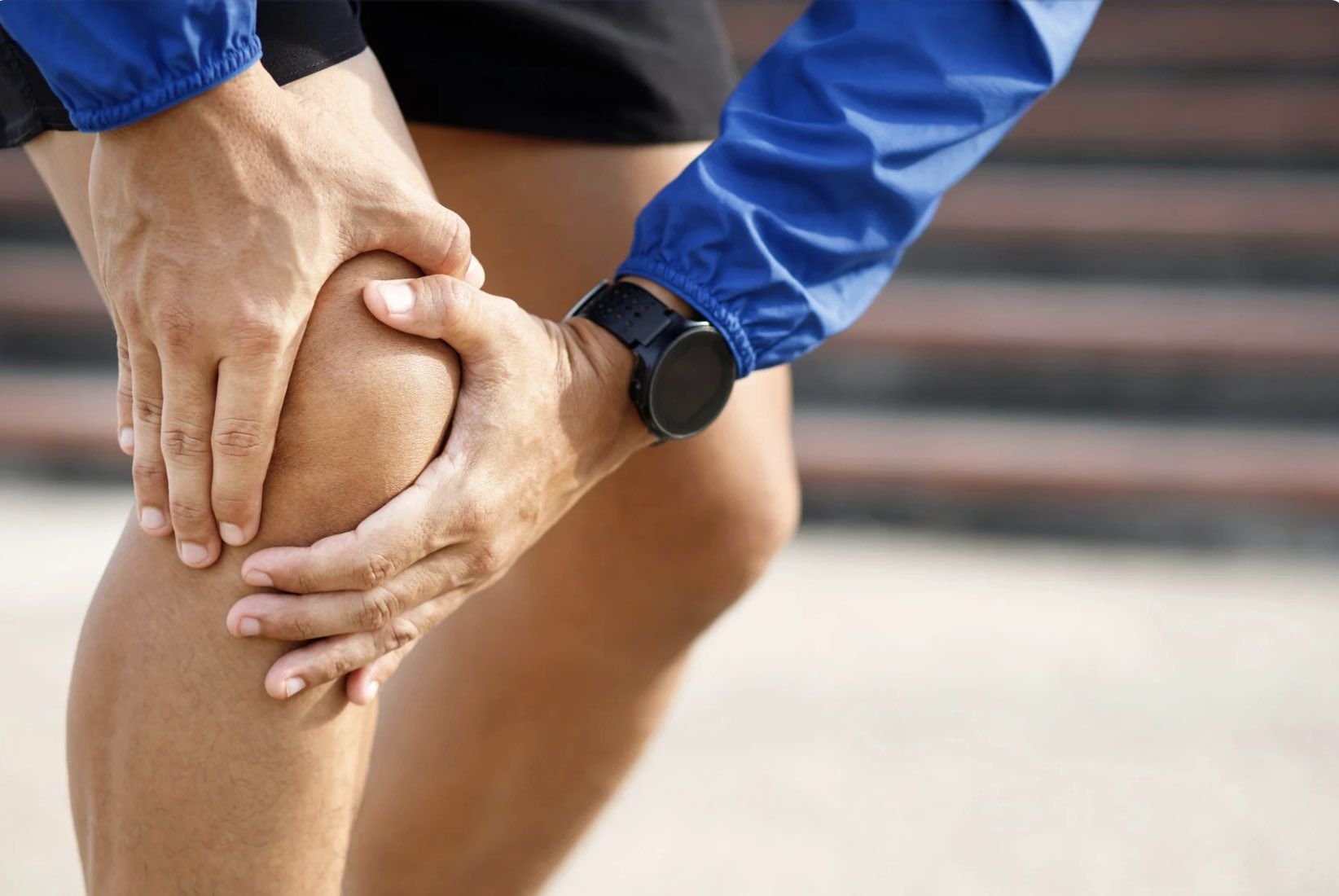Why does my knee replacement feels loose? Image by Money Business Images from Canva
Total knee replacement (TKR) is a very common surgery.[1] Typically, 80% or more of people who have had a knee replacement are satisfied with their surgery.[1][2] A knee replacement often helps people improve their mobility, reduce pain, and improve their quality of life.[1][3] However, some people continue to experience discomfort, including a feeling of a knee replacement loosening after the surgery.[1][2] In this blog, we will discuss why some people feel like their knee replacement is loose and in which cases you should follow-up with your surgeon. We will also discuss all of the cases where you have nothing to worry about, and some of what you are feeling is perfectly normal after a total knee replacement.
Why does my knee replacement feel loose?
Due to advances in surgical technology and improved knee implant designs,[4] only about 6% of people need a revision surgery five years after a total knee replacement, which is considered a low rate.[5] Only 20-30% of all knee replacement revision surgeries are due to a knee implant becoming loose after surgery.[6][7] This means that only around 1.2-1.8% of all people who had a total knee replacement surgery will need a revision surgery because of a knee implant loosening.
If the percentage of people who need a revision surgery as a result of a knee implant loosening is so low, why do many people feel like their knee replacement is loose? The reason for this is that people are not yet used to living with their new knee implant. It is important to remember that your new knee implant will not feel like a natural knee, and this is normal! During the total knee replacement, the knee joint is replaced with an artificial prosthesis (a knee implant). A prosthesis is an artificial device used to replace a body part, in this case, your knee. It is normal that a new knee implant might feel unnatural or uncomfortable.[8] The feeling of loosening of a knee implant in most people is due to the fact that a knee implant just feels different than a person’s natural knee.[8] During the knee replacement surgery, a knee implant is securely fixed and it is unlikely to become loose, especially during the first year after your knee replacement surgery. Some people experience a “weird feeling” or heaviness in their new knee replacement after surgery, which also appears when people are not yet used to living with their new knee implant. You should give yourself time to recover and adjust to this new feeling.

When should you see a surgeon?
Revision surgery involves a procedure that adds, repairs or replaces elements of a knee replacement.[9] While needing revision surgery after a total knee replacement is considered rare,[10] it is important to be aware of signs and symptoms of needing revision surgery. Awareness will help manage anxieties you might have surrounding revision surgeries and help ensure symptoms that may be an issue are assessed. Loosening of the knee implant occurs when the attachment between the joint replacement and the bone becomes loose.[9] You may hear the term aseptic loosening, this means that the attachment becomes loose without infection present.[9]
People usually experience pain which often appears while walking as a loose knee replacement creates an unstable joint. After a knee replacement, most people usually experience pain relief between 6-12 weeks after surgery.[11] Loosening is often caused by implant wear; the rate of wear is affected by time and activity.[12] Therefore, lossening of the implant is more of a concern for young and active people.[12] Other risk factors include increased flexion (or bending) of the knee, increased weight, and male sex.[13] A loose knee replacement compromises stability of the knee joint and people might feel like their knee wants to “give out.” Irritation, inflammation, and swelling may also be present.[14] People may also have reduced knee range of motion, meaning they are not able to bend or flex their knee properly. Reduced range of motion can be expected after surgery but it typically improves with time and exercises after a knee replacement.[15] Monitor your knee for any of the symptoms mentioned above and if they are not improving over time or your symptoms are worsening follow-up with your surgeon to reevaluate your knee replacement.
Conclusion
The need for knee revision surgery due to the knee implant becoming loose is extremely rare, contributing to only 20-30% of ALL knee replacement revision surgeries.[6][7] Providing yourself time to adjust to your new knee is important as people are often not yet used to living with their knee implant causing the “weird feeling” or loose-fitting feeling in their knee. However, you may need to see your surgeon again if you experience chronic knee pain, swelling, irritation, your knee feeling like it is going to "give out" and reduced knee bending and straightening all of which is not getting better with time.
For physical therapy video guided exercises after a knee replacement download the Curovate App. Curovate provides a personalized physical therapy plan with video guided exercises to complete throughout each stage of the healing process, all in the comfort of your own home. Proper rehabilitation can help preserve your knee replacement and improve your pain and activity levels. Click the links below to download the app!
If you need further customized assistance during your knee replacement recovery check out our Virtual Physical Therapy page to book your 1-on-1 video session with a physical therapist.
 |
 |
|---|
Other recommended blogs
- What is a Total Knee Replacement?
- How does a knee replacement stay in place? What's the difference between cemented and uncemented knee replacements? Can a knee replacement become loose?
- Why does my knee feel weird after my total knee replacement? Why does my knee feel heavy after my total knee replacement?
References
7. American Joint Replacement Registry (AJRR). 2019 Annual Report. Rosemont, IL: American Academy of Orthopaedic Surgeons (AAOS). 2019;1-84. ISSN 2375-9119








